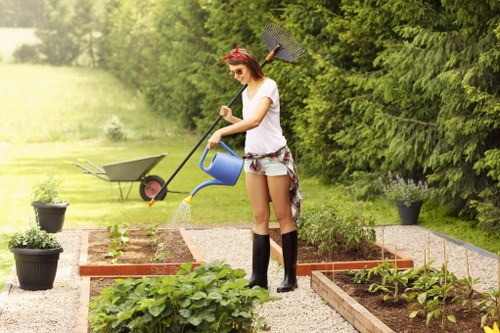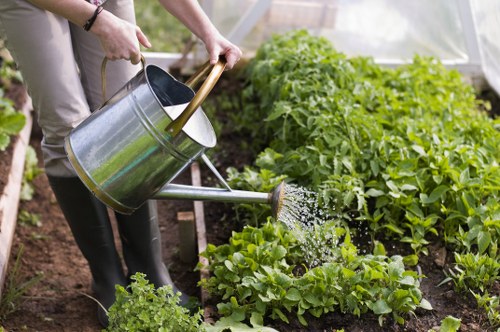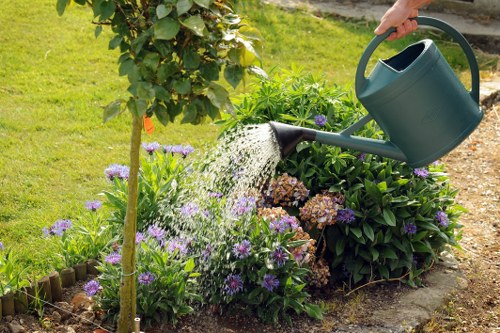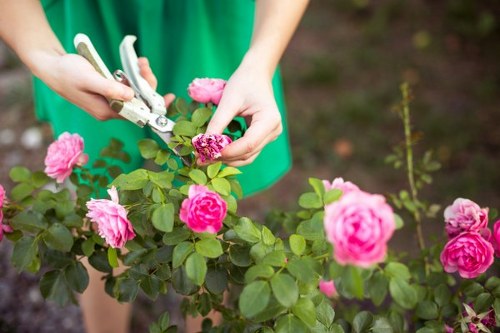Gardeners Archway: A Comprehensive Guide

Gardeners Archway are beautiful and functional additions to any garden space. They serve as both structural elements and aesthetic focal points, enhancing the overall beauty of your outdoor area. Whether you're a seasoned gardener or just starting, understanding the various aspects of gardeners archways can help you make informed decisions for your garden.
An archway can transform a simple garden path into an enchanting entrance, creating a sense of depth and perspective. It provides a framework for climbing plants, allowing you to grow flowers, vines, or even fruiting plants over the arch. This not only adds color and life to your garden but also offers shade and privacy.
Choosing the right archway involves considering factors such as material, design, and placement. With a plethora of options available, you can customize your archway to match your garden's style and your personal preferences. This guide will explore the various elements of gardeners archways, providing you with the knowledge to create a stunning garden feature.
What is a Gardeners Archway?

A gardeners archway is a decorative structure that spans an entryway or garden path, creating a graceful entrance to your outdoor space. It serves both practical and aesthetic purposes, providing support for climbing plants while adding visual interest to your garden layout.
Historically, archways have been used in gardens for centuries, originating from classical architecture and landscaped gardens of the elite. Over time, they have evolved to fit various garden styles, from traditional English gardens to modern minimalist landscapes.
In contemporary gardening, archways are available in a wide range of materials, styles, and sizes, making it easy to find one that fits your specific needs. Whether you prefer a rustic wooden arch, a sleek metal design, or an ornate wrought iron structure, there's an archway to complement any garden aesthetic.
Design Ideas for Gardeners Archway

Materials Used
Selecting the right material for your archway is crucial for durability and style. Common materials include:
- Wood: Offers a natural, warm appearance and can be painted or stained.
- Metal: Provides strength and longevity, often seen in wrought iron or aluminum designs.
- PVC: Lightweight and low-maintenance, suitable for various climates.
- Stone: Creates a sturdy and timeless look, ideal for formal gardens.
Styles and Aesthetics
Garden archways come in various styles to match different garden themes:
- Victorian: Ornate details and intricate designs, perfect for classic gardens.
- Modern: Clean lines and minimalist designs, suitable for contemporary outdoor spaces.
- Rustic: Natural materials and simple constructions, ideal for country or cottage gardens.
- Tropical: Lush, vine-covered structures that enhance exotic garden themes.
Installation Tips

Choosing the Right Location
Proper placement of your archway is essential for both functionality and visual appeal. Consider the following when selecting a location:
- Pathways: Positioning the archway along a garden path creates a welcoming entrance.
- Focal Points: Use archways to highlight specific areas, such as a seating area or a pond.
- Sunlight: Ensure the location receives adequate sunlight for the plants you intend to grow.
- Space: Allow enough space for the archway to extend and support climbing plants.
Step-by-Step Installation Guide
Installing a gardeners archway involves several steps:
- Measure the Area: Determine the dimensions required for your archway.
- Prepare the Site: Clear the area and ensure the ground is level.
- Assemble the Archway: Follow the manufacturer's instructions for assembling the structure.
- Secure the Arch: Anchor the archway firmly into the ground using stakes or a concrete base.
- Plant Climbing Vines: Choose suitable plants and guide them through the archway.
Maintenance of Your Gardeners Archway

Regular Cleaning
Keeping your archway clean is essential for its longevity and appearance. Regularly remove dirt, debris, and dead plant material to maintain its structure and aesthetics.
Seasonal Maintenance
Different seasons bring unique challenges. In spring, inspect for any winter damage and repair as needed. During summer, ensure plants are healthy and not overloading the structure. In autumn, prepare the archway for winter by removing fragile plants and protecting the structure.
Repair and Restoration
Over time, archways may require repairs. Address any rust on metal structures, splintered wood, or loose joints promptly to prevent further damage. Regular upkeep ensures your archway remains a stunning feature in your garden for years to come.
Enhancing Your Garden with Archways
A gardeners archway can serve as a versatile element in your garden design. Here are some ways to enhance your garden using archways:
Plant Choices
Select plants that complement your archway's structure and your garden's overall theme. Popular choices include roses, wisteria, clematis, and ivy. These plants not only add color and fragrance but also provide the necessary support to climb and showcase your archway.
Lighting and Accessories
Incorporate lighting to highlight your archway during the evening hours. String lights, lanterns, or solar-powered fixtures can create a magical ambiance. Additionally, decorative elements such as hanging ornaments or cascading flowers can add personality to your arch.
Integration with Garden Structures
Combine archways with other garden features like pergolas, trellises, or benches to create cohesive and functional outdoor spaces. This integration can enhance the overall flow and usability of your garden, making it a more enjoyable place to relax and entertain.
Local Relevance: Nearby Areas to Archway
The Archway area is surrounded by numerous neighborhoods that offer unique features for gardeners and outdoor enthusiasts. Here are some of the closest areas and what they bring to the table:
- Finsbury Park: Known for its expansive gardens and recreational facilities, Finsbury Park is perfect for those who enjoy large green spaces and community gardening events.
- Highgate: Highgate offers beautiful historic gardens and parks, providing inspiration for classic archway designs.
- Muswell Hill: With its charming residential gardens, Muswell Hill is ideal for gardeners looking to blend traditional and modern archway styles.
- Crouch End: Crouch End boasts a vibrant community garden scene, offering workshops and resources for budding gardeners.
- Kentish Town: Kentish Town features a mix of urban and green spaces, suitable for gardeners interested in small-scale archway installations.
- Tottenham Hale: Tottenham Hale provides access to local nurseries and garden centers, making it convenient for sourcing materials and plants.
- Seven Sisters: Seven Sisters is home to diverse plant species and innovative gardening projects, inspiring creativity in archway design.
- Islington: Islington offers stylish and contemporary garden spaces, perfect for modern archway enthusiasts.
- Holloway: Holloway includes lovely community parks where gardeners can showcase their archways.
- Camden Town: Camden Town's eclectic gardens encourage unique and artistic archway creations.
- Archway: The heart of the area itself, Archway provides essential gardening resources and community support for local gardeners.
- Green Lanes: Stretching through several neighborhoods, Green Lanes offers diverse gardening styles and inspirations for archway designs.
- Seven Sisters Road: Featuring a variety of plant nurseries, Seven Sisters Road is a prime spot for sourcing climbing plants for your archway.
- Stroud Green: Stroud Green's picturesque gardens are perfect for experimenting with different archway styles and plant combinations.
- Harringay: Harringay offers community gardening spaces where archways can be a central feature.
- Drayton Park: Drayton Park's green spaces are ideal for integrating archways into larger garden landscapes.
Frequently Asked Questions
1. What are the best plants to grow on a gardeners archway?
Popular choices include roses, wisteria, clematis, ivy, and grapevines. These plants are known for their ability to climb and cover arch structures beautifully.
2. How do I maintain my gardeners archway throughout the year?
Regular cleaning, seasonal inspections, and timely repairs are essential. Pruning climbing plants and protecting the arch from harsh weather can extend its lifespan and keep it looking attractive.
3. What materials are best for outdoor archways?
Wood, metal, PVC, and stone are common materials. The best choice depends on your garden style, budget, and the level of maintenance you're willing to undertake.
4. Can I install a gardeners archway myself?
Yes, many archways are designed for DIY installation with clear instructions. Ensure you have the necessary tools and follow safety guidelines. If unsure, consulting a professional can ensure proper installation.
5. How do I choose the right size for my gardeners archway?
Consider the space where you plan to install the archway and the scale of your garden. Measure the area accurately and choose an arch size that complements the existing garden structures without overwhelming the space.
